
It’s not true that dogs see in black and white, but they do see fewer colors than most people. That’s because they have only two types of cone cells in their eyes, compared to the three humans have (sensing red, green, and blue light). Color is not the only difference. Some animals have stronger or weaker vision, better suited to different qualities of light. Some pets use a different number of eyes or lenses to construct a visual map that suits their priorities.
All this means that pets navigate your home in a different way to you. Your dog leans on their sense of smell and their memory of where things are to find their way around. Avoid regularly moving furniture around as it may disorientate them. But, if you’ve planned a new layout, it can help to move one piece of furniture at a time.
Your cat is a very visual creature, but – like the dog – sees fewer colors. Cats see very little red but lots of green and blue. It might help if toys, cushions, and other things the cat seeks are in these colder shades.
Planning to redecorate your home and want to consider your goldfish’s point of view? Or just curious why your cat/parrot/tarantula keeps crashing into the standing lamp? HomeAdvisor has trawled through the latest scientific research to create a new set of visualizations showing how your pets might see your surroundings at home.
Dog
Your dog will take just about any style you make at home and turn it into a pastel-colored coastal living kind of affair. Dogs see muted combinations of the colors filtered by their two-cone eyes: blue and yellow.


They may only have 20-40% of the visual acuity (ability to make out shapes and details) of their owners. But on the up-side, they have a wide, 240-degree field of vision – which is why they never miss you sneaking into the kitchen.
Cat
Cats must see things differently to live the way they do. But existential outlook aside, a cat’s point-of-view is characterized by its excellent night vision. While humans have a high number of cones in our retinas, cats have lots of rods – a different type of photoreceptor cell, sensitive to low light.
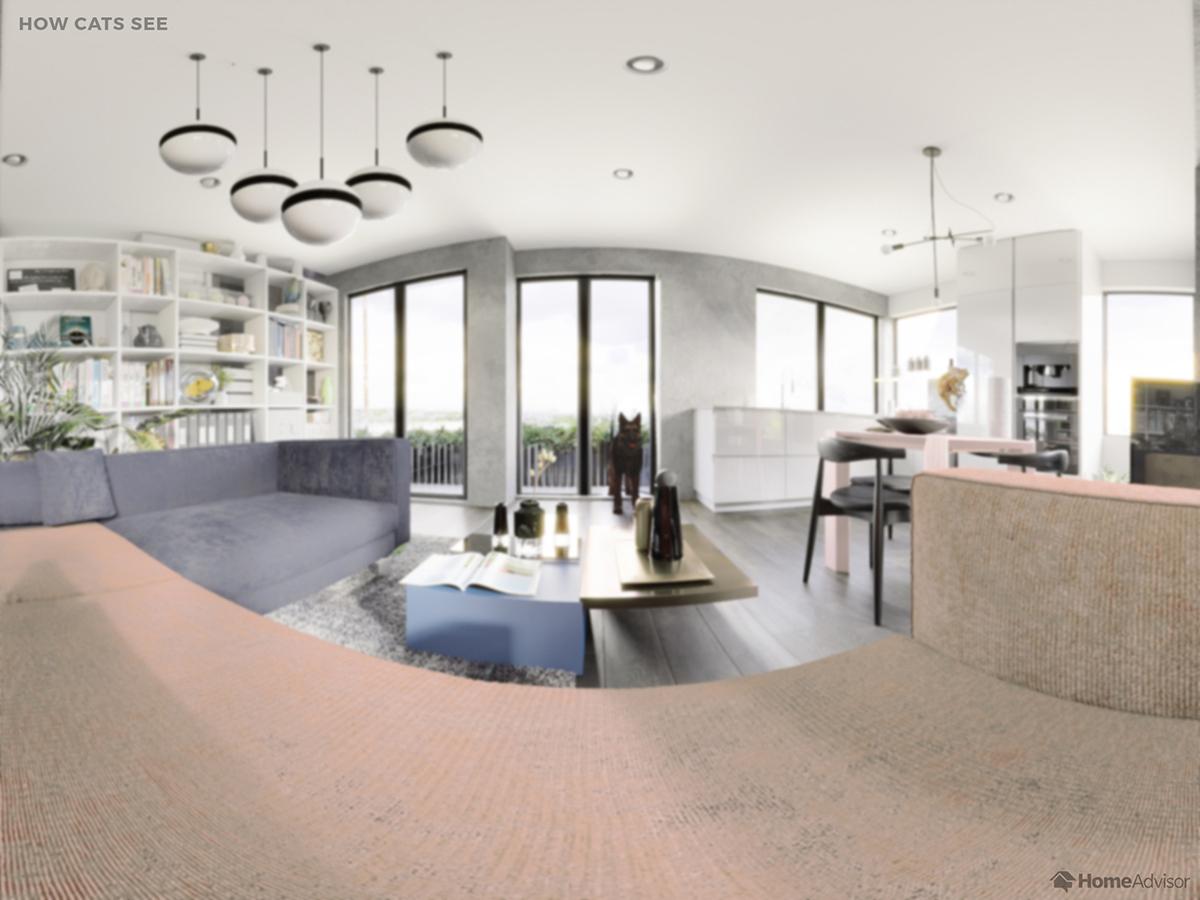

Your cat has a wider field of view than you (200 degrees versus 180) but not quite as wide as that of a dog. Its color vision is somewhere between that of you and your dog, too, since it is a dichromat (has two color cones) that sees blues and yellows with a bit of green as a bonus.
Goldfish
If your goldfish turns its nose up at your new suite, it’s because she can see more colors than you. Her ability to see ultraviolet light helps her see in water, but may also reveal where your dog has tried to mark its territory on the sofa.
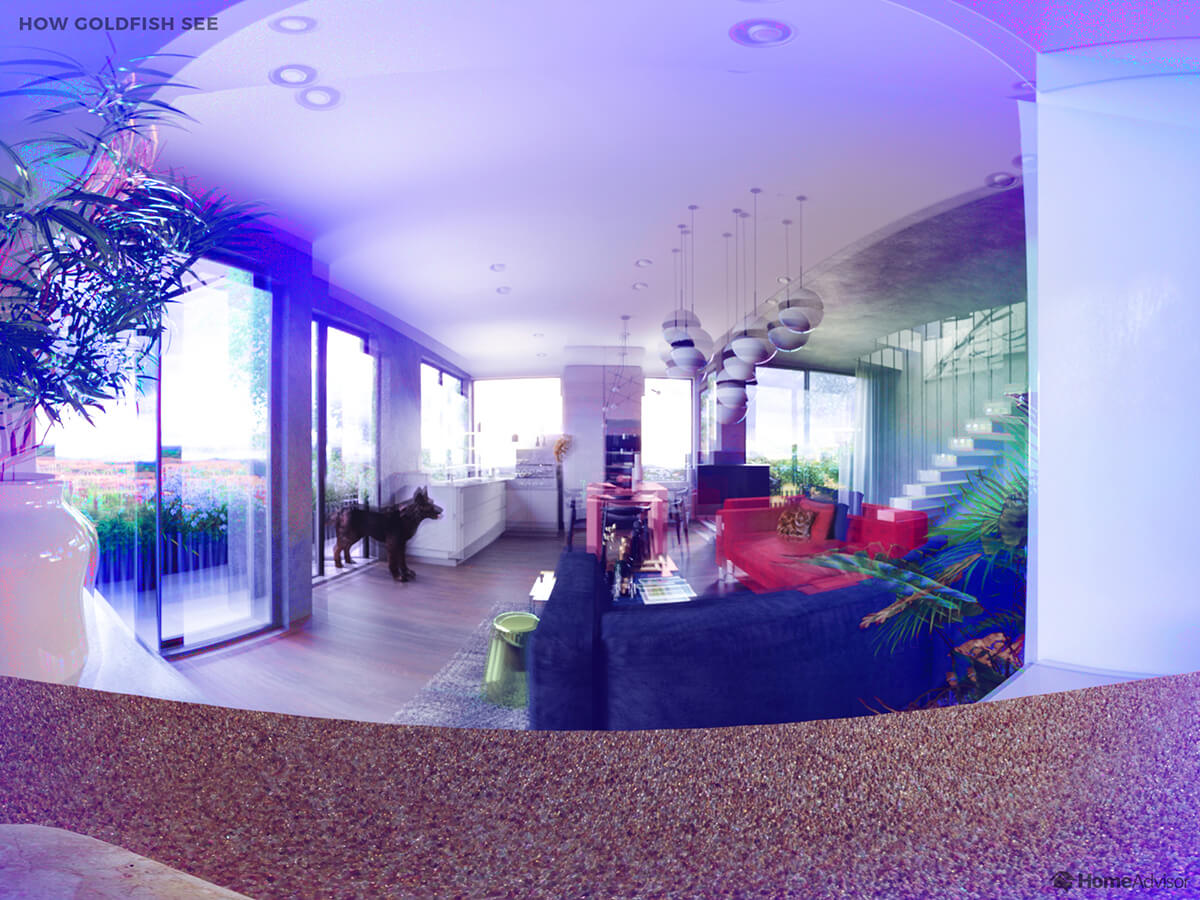

Appropriately enough, a goldfish also enjoys a fisheye lens effect. Its round corneas gather light from an almost 360-degree canvas, and are almost the same density as water, compensating for the warping effects of light in water.
Snake
If your only pet is a snake, you needn’t worry about the visual design of your interiors. Most snakes have very poor vision in daylight, although a good serving of rods means their nighttime vision isn’t too shabby.
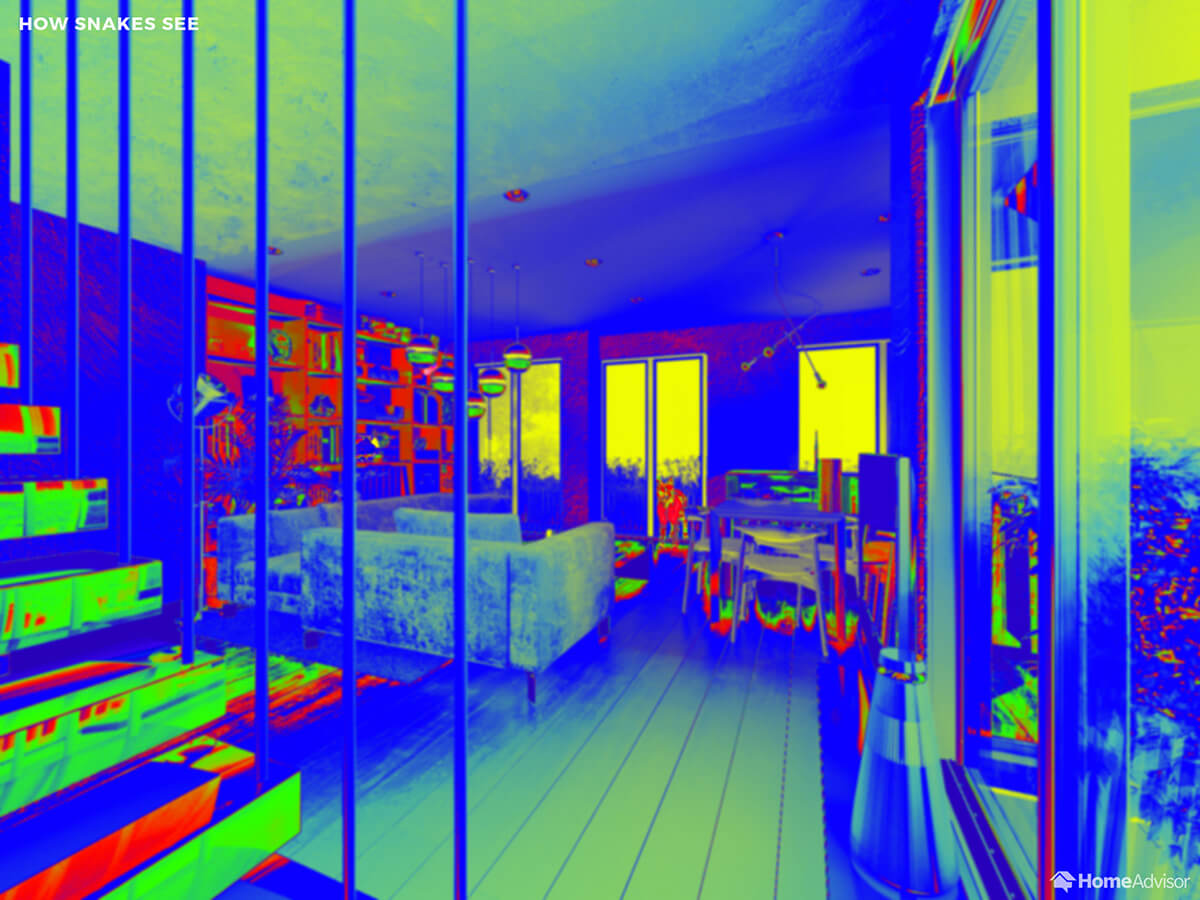

The bonus for some snake species is infrared vision. Your snake may merge heat-detection data from its pit organs (thin membranes between the eyes and nostrils) with visual data to create an image that looks something like thermal imaging.
Tarantula
Most spiders have eight rather feeble eyes and rely more on their hairy legs to feel their way around.
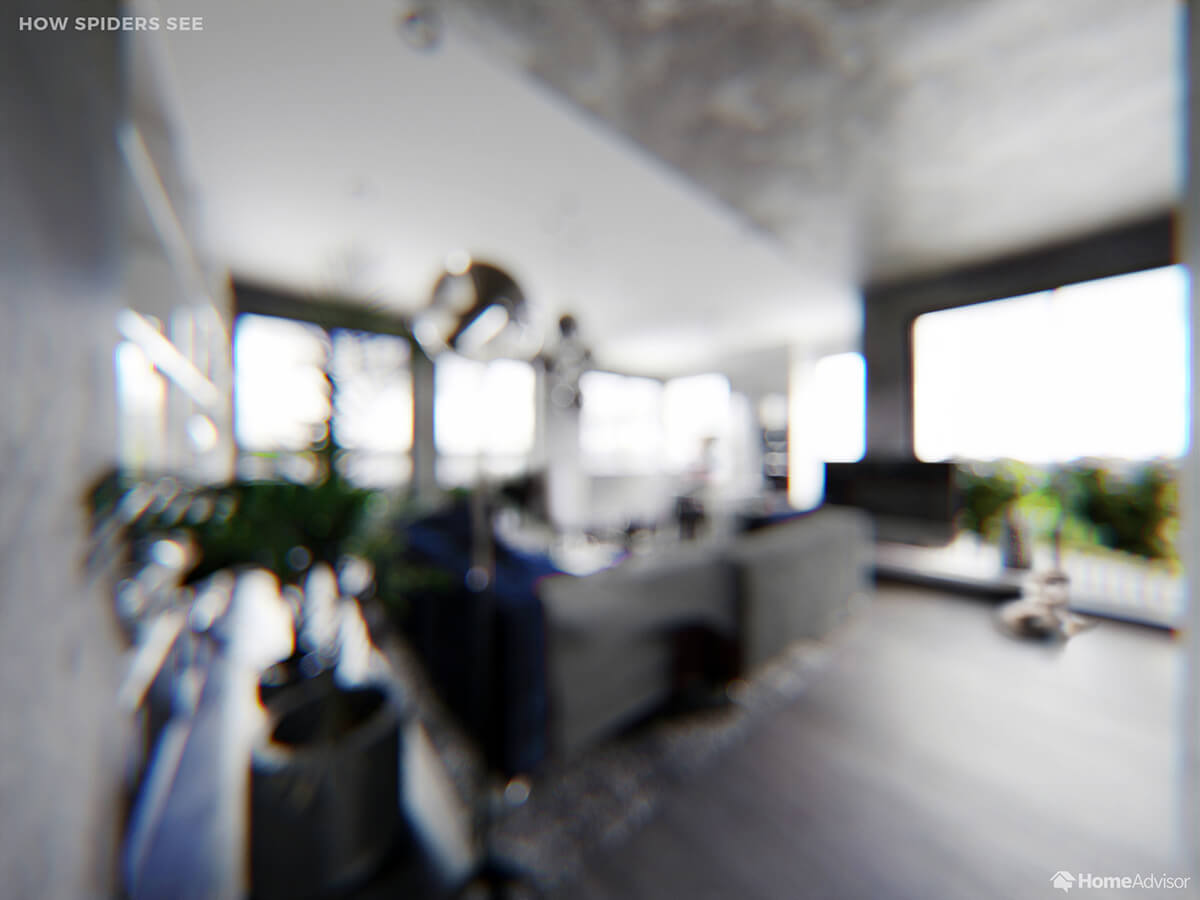

However, researchers have recently noted the color-sensing structures of opsins (a type of protein) might make them sensitive to color, and might be used to find mates. So if you notice your tarantula getting frisky with a bright blue ashtray, you know that science is on to something.
Parrot
Birds rely heavily on a highly effective visual system, and your parrot can see UV, blue, green, and red color ranges. In fact, the ‘violet’ color in this picture has been used to double for ultraviolet, which is actually colorless and invisible to humans.
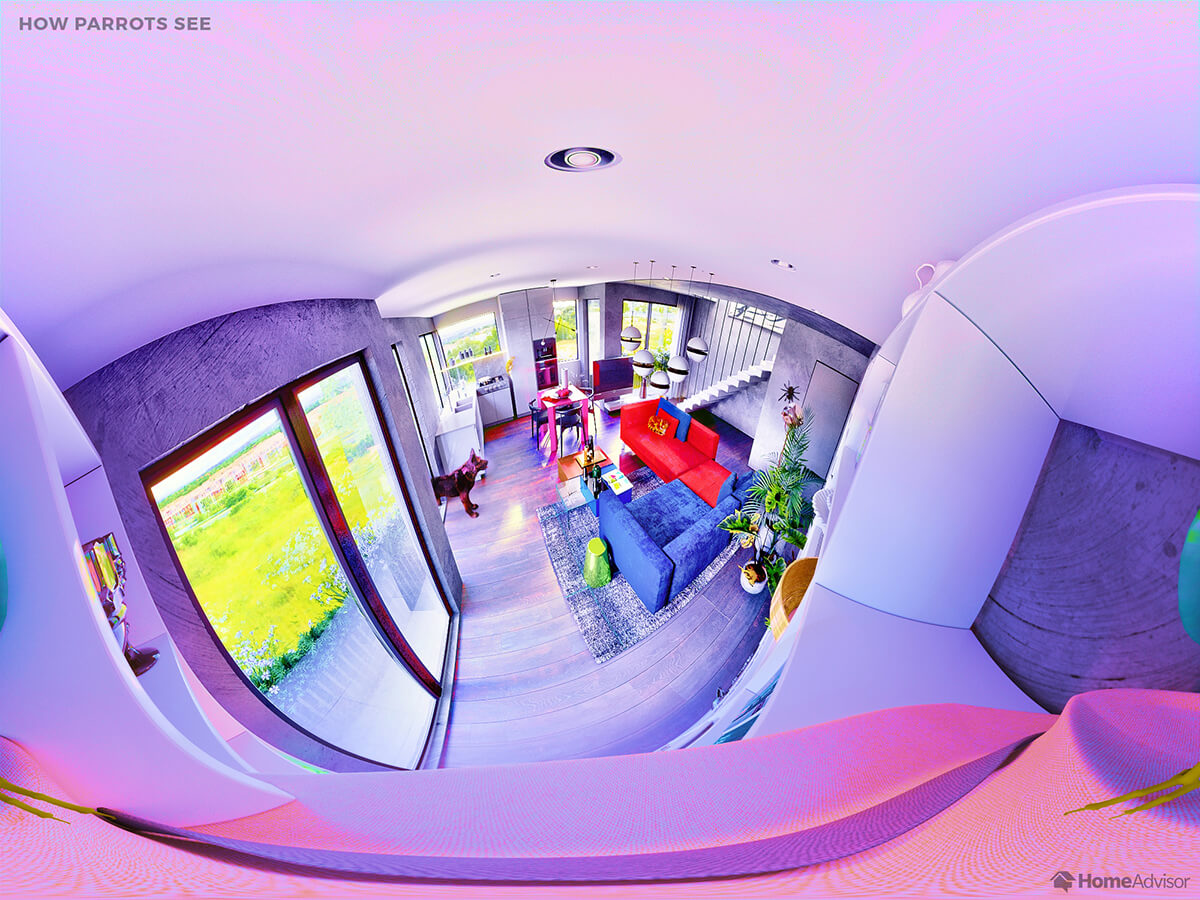

Polly can also adjust her focus super-quickly, and has near 300-degree coverage but monocular vision, meaning one eye focuses on one thing while the other wanders. She can also contract her pupils at will, for example if doesn’t dig your new lampshade.
Chameleon
Who cares more about your choice of living room palette than your pet chameleon? Not only does he absorb, transform, and re-emit color (changing to regulate temperature and communicate), his eyes are almost all ‘cone’ and no ‘rod,’ so he sees lots of color (including the ultraviolet spectrum) but little contrast.
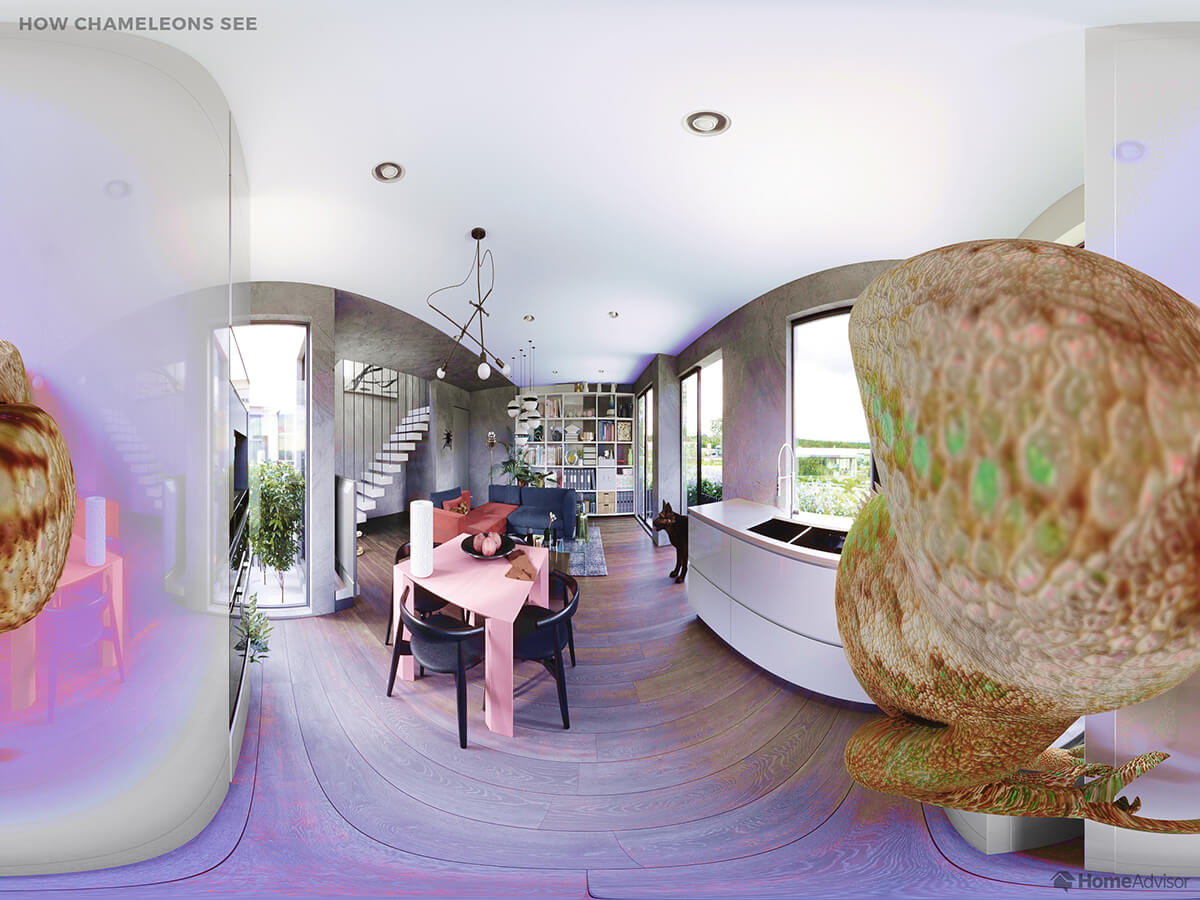

Your chameleon’s eyes operate independently on little turrets so that he can watch for predators across a total field of vision of 342 degrees. If you need to creep up on him to grab your copy of Wallpaper back, you’ll find he has a blind spot of 18 degrees just behind his head.
Everyone’s a Critic
Like any housemate, living with a pet only becomes more complex the better you get to know them. You can always decorate your home for the human eye, but it’s good to know what colors stand out to your pup or kitten. Maybe they’ll use that scratching post, toy or dog bed more if the color pops? Which pet-proof feature are you planning to add?
SOURCES
American Museum of Natural History. (2014). Ten Things to Know About Tarantulas. amnh.org
Blake, R. (1979). The visual system of the cat. Perception & Psychophysics. 26(6).
Boumis, R. (n.d.). How Do Goldfish Find Food? animals.mom.com
Britt, R.R. ( 2010). Can Snakes See Well? livescience.com
Chameleon School. (2019). 8 Amazing Facts About Chameleon Eyes. chameleonschool.com
Foley, S. et al. (2020). The evolution of coloration and opsins in tarantulas. royalsocietypublishing.org
Miller, A. (2016). Eyes give 360° vision : Chameleon. asknature.org
Neumeyer, C. (1992). Tetrachromatic color vision in goldfish: evidence from color mixture experiments. Journal of Comparative Physiology A. 171(5).
Ohnishi, K. (1993). Development of color vision in goldfish: selective delayed maturation of blue vision. Vision Research. 33(12).
Orosz, S. (2013). Why Birds’ Eyes Are So Different From Ours. lafeber.com
Simões, B.F. et al. (2016). Visual Pigments, Ocular Filters and the Evolution of Snake Vision. Molecular Biology and Evolution. 33(10).
Sokol, J. (2020). Why So Blue, Tarantula? A Mystery Gets a New Clue. nytimes.com
Stromberg, J. (2013). New Study Shows That Dogs Use Color Vision After All. smithsonianmag.com
Utaraitė, N. (n.d.). This Is How Birds See The World As Compared To Humans And It’s Pretty Amazing. boredpanda.com



Are You Familiar With This Topic? Share Your Experience.